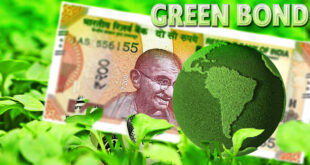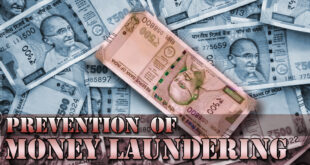- As per the latest economic survey, the Indian economy is set to attain a real GDP growth of 7% in 2022-23, with both the retail and wholesale inflation rates falling below 6% in the months ahead.
- The Union Budget presented in this backdrop assumes a nominal GDP growth of 10.5% in 2023-24, which implies a projected inflation rate of just 4%, given the economic survey’s baseline real GDP growth projection of 6.5%.
- This reflects official optimism regarding the Indian economy remaining in a macroeconomic sweet-spot of declining inflation and high growth, even as the rest of the world experiences a growth slowdown alongside sticky inflation.
- The economic survey has predicted a fresh cycle of investment-led growth led by the private corporate sector, supported by increasing credit from the banks.
- Rather than relying upon such rosy predictions, however, the Finance Minister has announced a sharp increase in capital expenditure in the Union Budget, seeking to “crowd-in” private investment especially in infrastructure sectors like railways, roads and power plants.
- On the other hand, subsidies on food, fertiliser, petroleum and interest subsidies, along with outlays on welfare schemes like the MGNREGA have been reduced quite significantly, indicating higher prices of cereals, LPG cylinders and fertilisers like urea in the days to come. The overall impact of such expenditure switching may turn out to be inflationary.
Total expenditure decreases
- A longer-term assessment of the Union Budgets is presented in Table 1, which enables us to compare the present government’s fiscal strategy in the post-pandemic period with the fiscal record of the UPA-II and NDA-I governments.
- As can be seen from Table 1, while the total central government expenditure (annual average) fell from 15% of the GDP during the UPA-II era to below 13% during the NDA-I government’s tenure, the recession precipitated by the COVID-19 pandemic forced a substantial increase in total expenditure to 17.7% and 16% of the GDP, in 2020-21 and 2021-22, respectively.
- Total expenditure has reduced moderately since then, to around 15% of GDP.
- While capital expenditure has been enhanced significantly since 2020-21, subsidies on food, fertiliser and petroleum have been reduced from 2021-22.
- Defence expenditure, which was 2% of the GDP on average under the UPA-II government Budgets and 1.6% of GDP under the NDA-I, has fallen to 1.5% of GDP in 2022-23.
- As a proportion of the GDP, while expenditure on agriculture seems to have increased during the NDA-II government’s tenure, mainly on account of the PM-Kisan cash transfer scheme, expenditure on education has reduced quite significantly compared to the UPA-II era.
- Expenditure on rural development and health seems to have remained at the same level. The increase in capital expenditure is mainly focussed in transport and energy sectors.
Tax situation
- The reason why the government has to cut subsidies and welfare expenditures to increase capex on infrastructure is because of inadequate revenues, which have remained to be the principal constraint on public expenditure.
- Gross tax revenues as a share of GDP barely rose from 10.2% under the UPA-II period to 10.8% under NDA-I and then fell to around 10% during the first two years of the NDA-II government. It is only in the post-pandemic period, since 2021-22, that gross tax revenues have crossed 11% of GDP.
- It can be noted further that the corporate tax collection as a share of GDP fell from 3.7% of the GDP under the UPA-II to 3.3% of the GDP under the NDA-I, and came down further to 2.3% of the GDP in 2020-21 following the sharp corporate tax cuts introduced in 2019.
- The post-pandemic recovery has led to enhanced tax collections, but corporate tax collections remained at 3.1% of the GDP in 2022-23.
- While corporate taxes in the GDP have declined under the NDA rule, the share of income taxes in the GDP has risen progressively to reach 3% of the GDP in 2022-23.
- Revenues from personal income taxes becoming almost equal to corporate tax
revenues point towards a regressive taxation regime, which perhaps compelled the Finance Minister to provide a few concessions to income tax payers in this year’s Budget.
- However, going by the Finance Minister’s speech, revenue foregone due to those concessions is projected at only ₹35,000 crore, in the backdrop of income tax collections of ₹8,15,000 crore (RE) in 2022-23.
- Another regressive shift that has come under the taxation system under the NDA rule is the increase in indirect taxes.
- While the share of customs duties in the GDP has fallen from 1.6% during the UPA-II to 0.8% in 2022-23, the share of excise duties in the GDP rose from 1.7% under the UPA-II (when GST was yet to be introduced) to 2% in 2020-21 and remained above 1.2% in 2022-23, over and above the GST collections by the central government at over 3% of the GDP.
- High excise duties continue to be levied on petroleum-products, which keep fuel prices high. The increasing share of income taxes in direct taxes and the rising share of indirect taxes in GDP have contributed to the observed increase in income and consumption inequalities.
- The States’ share in central taxes increased from 2.8% of the GDP under the UPA-II to 3.7% of the GDP under the NDA-I, owing to the enhanced devolution formula recommended by the fourteenth finance commission.
- Under the NDA-II government, the States’ share in central taxes has declined to an annual average of 3.4% of the GDP.
- This is mainly due to the increasing incidence of cesses and surcharges imposed by the central government, which have shrunk the divisible pool, denying more tax revenues to the States.
- The fiscal deficit had come down from 5.4% of the GDP under the UPA-II government to 3.7% under the NDA-I, mainly on account of expenditure compression.
- Under the NDA-II government, however, the deflationary fiscal stance was reversed in 2019-20. Fiscal deficit peaked at 9.2% of the GDP in 2020-21 in the backdrop of the pandemic.
- While the Finance Minister has set a “path of fiscal consolidation” with a target to bring down the deficit below 4.5% by 2025-26, the fiscal deficit targeted for 2023-24 in the present Budget is 5.9%.
- The NDA-II government is unlikely to achieve the deficit target two years from now, without recourse to drastic expenditure compression or sharp increase in revenue mobilisation.
Stack-up against G-20
- A comparison of the estimates and projections of India’s public debt situation and fi scal balance (Centre and States combined) with the G-20 emerging market average, is provided
- The estimates show India’s public debt to have peaked at 89% of the GDP in 2020, while that of the G-20 emerging market economies continue to deteriorate and surpass India’s gross public debt-to-GDP ratio by 2026. Despite India’s government revenue-to-GDP ratio being significantly lower than the G-20 emerging market average, India’s public debt-to-GDP is projected to perform better than the G-20 emerging economies’ average on account of a higher projected GDP growth.
- It is such an expectation which underlies the vision of “Amrit Kaal’’ contained in the Union Budget — an utopia of a perpetual macroeconomic sweet-spot.
- If the projected GDP growth fails to materialise, the macroeconomic situation can turn dystopic pretty fast, like the debt-equity ratio of the Adani conglomerate.
SOURCE: THE HINDU, THE ECONOMIC TIMES, PIB
 Chinmaya IAS Academy – Current Affairs Chinmaya IAS Academy – Current Affairs
Chinmaya IAS Academy – Current Affairs Chinmaya IAS Academy – Current Affairs



